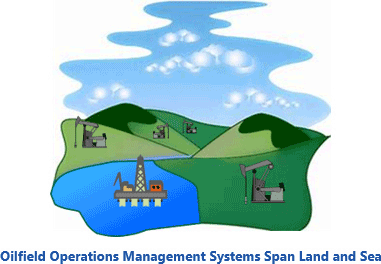




ARC has been conducting research related to oil & gas technology for over two decades. Recently ARC conducted detailed research for Oilfield Operations Management Systems (OOMS). Based on this research, we have developed a set of criteria to help you select the best OOMS.
Based on most industry sources, there are over 1,100,000 onshore and offshore platform oil and gas wells operating across the world today, and on average, there are about 100,000 new wells drilled annually. Per OE magazine, there were over 4,400 operational subsea wells and another 6,400-plus wells that can be developed in the coming years. OE data shows there were almost 10,000 operational offshore platforms and almost 2,000 platforms that can be developed in the coming years. There are hundreds of thousands of wells operating onshore and tens of thousands more that will be coming online annually through the forecast period.
 Depending on the production level of an individual well (or field), the financial benefit of increasing operational performance by even 3 percent to 4 percent can translate into thousands and even millions of dollars per year, per month, or even per day for very large projects. Therefore, investments in oilfield operations management systems must be viewed in terms of ROI and other meaningful metrics, which owner-operators, independent E&P companies, and oilfield service suppliers can measure and manage. ARC believes most wells producing at rates sufficient to financially justify an investment in an oilfield operations management system should be doing so already.
Depending on the production level of an individual well (or field), the financial benefit of increasing operational performance by even 3 percent to 4 percent can translate into thousands and even millions of dollars per year, per month, or even per day for very large projects. Therefore, investments in oilfield operations management systems must be viewed in terms of ROI and other meaningful metrics, which owner-operators, independent E&P companies, and oilfield service suppliers can measure and manage. ARC believes most wells producing at rates sufficient to financially justify an investment in an oilfield operations management system should be doing so already.
As more owner-operators, independent E&P firms, and related stakeholders embrace the new “lower for longer” margin-compressed environment, an increasing number are expected to continue their investment in oilfield operations management systems solutions as oil prices continue to recover and the supply-demand equilibrium regains its balance. They realize that an oilfield operations management systems can help them lower costs, enhance production, improve and/or enhance recovery, and ensure more efficient operations with fewer experienced personnel, which is a vital investment that translates into material ROI and continued competitive survival.
The following are a few of the supplier and technology selection issues that end users should consider:
Investing in an oilfield operations management system as part of an overall strategic approach to enhancing oilfield operations is not a trivial matter, given the relative expense of the software and need to have previously invested in automation and technology to enable a digital oilfield operation to exist and to fully realize the benefits of an oilfield operations management systems. Therefore, end users are recommended to seek out suppliers that are willing to invest sufficient time, resources, product development/customization, and remote monitoring service, support, and training necessary to enable the successful deployment and operation of the operations management system for the life of the project. This can provide the foundation for a long-lasting, mutually beneficial partnership.
Earlier, ARC recommended users to work more closely with suppliers to develop operations management system solutions that meet their operational requirements. ARC also believes that users would be advised to consider working closely with suppliers during the installation and implementation phase of deploying the system in order to learn and better understand any potential operational or maintenance nuances that may exist.
ARC has been researching the oil & gas market for over two decades and we know the issues:
This ARC Selection Guide will help you select the Oilfield Operations Management Systems for the future.
For more information on this technology guide or to discuss how we can help you, please contact us.




